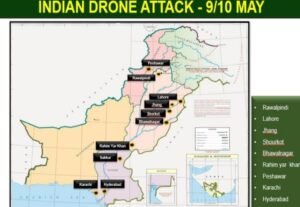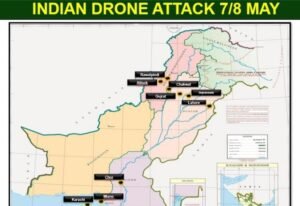Pakistan has admitted that it experienced greater damage than it previously admitted during India’s ‘Operation Sindoor’ on the night of May 6-7.
A confidential Pakistani report regarding its internal military Operation ‘Bunyan un Marsoos’ reveals that at least eight additional sites were harmed in the Indian attacks.
A map included in the dossier indicates that Indian strikes in Pakistan caused damage to buildings in Peshawar, Jhang, Hyderabad in Sindh, Gujrat in Punjab, Gujranwala, Bhawalnagar, Attock, and Chor, during the night of May 9 and 10.

ALSO READ: ‘Won’t release movie in Karnataka for now’: Haasan remains firm on him stance
The Indian Armed Forces did not reference the eight specified locations in the press briefings conducted following the counteroffensive on May 7.
A different map showed sites hit by India during the night of May 7 and 8.

Operation Sindoor and calls for ceasefire
‘Operation Sindoor’, initiated by India against Pakistan, aimed at and eliminated several terrorist sites in Pakistan and PoK.
Over 100 terrorists who were hiding in Pakistan were also eliminated in the Indian operation.
The mission was initiated to retaliate for the April 22 Pahalgam terrorist assault, which was subsequently asserted by The Resistance Front (TRF), a faction of Lashkar-e-Taiba.
On May 10, almost three days following India’s initiation of ‘Operation Sindoor’ targeting terrorist sites in Pakistan and Pakistan-Occupied Kashmir (PoK), the country under Shehbaz Sharif proposed a ceasefire to India.
ALSO READ: Rakesh Kumar Creates Record By Winning IRG Title In SOG Grandmasters Series!
A few days following the ceasefire between India and Pakistan, satellite images taken by Maxar Technologies showed considerable destruction at four air bases in Pakistan: Nur Khan Air Base in Rawalpindi, PAF Base Mushaf in Sargodha, Bholari Air Base, and PAF Base Shahbaz in Jacobabad.
Additional satellite images offered clear visual proof of the obliterated terror infrastructure in Pakistan’s Bahawalpur and Muridke.













